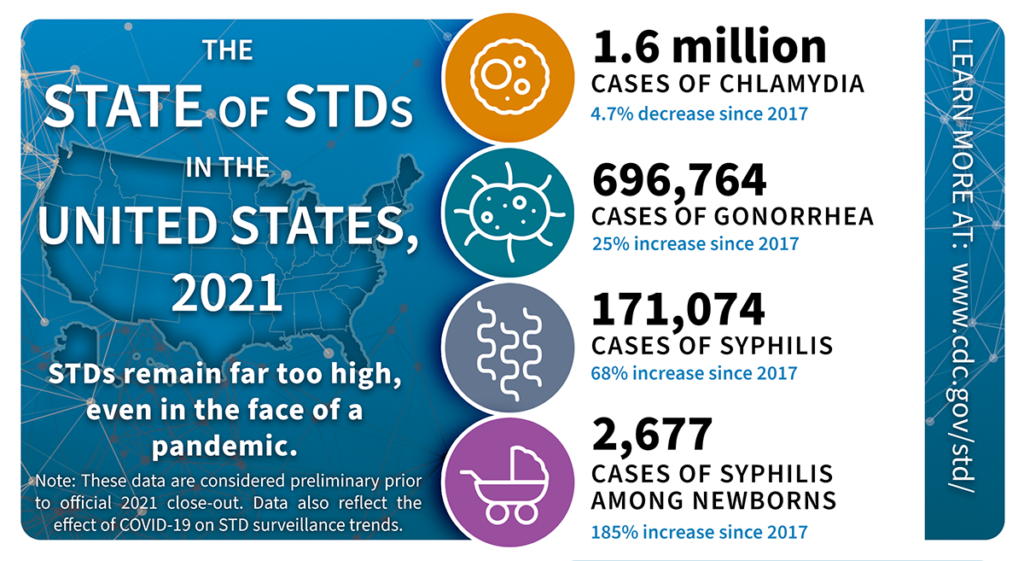This #PharmToExamTable post exploring the pathophysiology and approach to cefepime neurotoxicity was authored by Xiaotong Zhang and Kaycee Bartels, 2023 PharmD candidates at the University of Nebraska Medical Center (UNMC).
Fast Facts:
– Cefepime-induced neurotoxicity (CIN) is relatively rare and can be difficult to identify but should be considered if a patient begins experiencing altered mental status changes during cefepime therapy, especially in the setting of impaired renal function.
– When CIN is identified, cessation of cefepime, use of anti-epileptic drugs, and hemodialysis are management options. A note of the adverse reaction should be documented in the patient chart to alert future providers that neurotoxicity occurred during cefepime therapy. Careful evaluation of renal function or potentially avoiding cefepime should be considered in the future.
– Beta-lactam therapeutic drug monitoring is being researched to reduce the likelihood of adverse effects such as CIN, but there are no currently published national guidelines for practitioners to widely implement this process.
What is cefepime-induced neurotoxicity?

Cefepime-induced neurotoxicity (CIN) was first noted in a patient with end-stage renal disease on hemodialysis in 1999. This patient presented with altered mental status, myoclonus, and experienced a tonic-clonic seizure, but recovered after urgent hemodialysis.[1] It is estimated that CIN occurs in 3% of patients and mean onset of CIN symptoms is 5 days after cefepime initiation.[2] Cefepime is a fourth-generation cephalosporin that was FDA approved in 1996.[3] It has activity against gram-negative bacilli such as Pseudomonas aeruginosa, Klebsiella pneumoniae, and Serratia, gram-positive cocci including methicillin-susceptible Staphylococcus aureus and Streptococcus pneumoniae, and is effective against AmpC beta-lactamase-producing Enterobacterales.[2, 4] Cefepime can be utilized for the treatment of pneumonia, febrile neutropenia, urinary tract infections, uncomplicated skin and soft tissue infections, and complicated intra-abdominal infections.[3] It is primarily excreted by the kidneys (85% unchanged) and has a warning for neurotoxicity listed in the package insert. During post-marketing surveillance, serious adverse reactions have been reported including life-threatening or fatal occurrences of encephalopathy (disturbance of consciousness including confusion, hallucinations, stupor, and coma), myoclonus, seizures, and nonconvulsive status epilepticus. [3, 5]
What is the mechanism of cefepime-induced neurotoxicity (CIN)?
The proposed mechanism of cefepime-induced neurotoxicity is not well understood; however, it is thought to be caused by GABA-A receptor inhibition.[2, 6] This inhibition of GABA-A prevents influx of chloride ions into the postsynaptic neuron and causes an increase in action potential.[7] This increase in cellular excitability leads to altered mental status and seizures.[2, 8]
All beta-lactam antibiotics have the potential to cause neurotoxicity; however, it has been shown that cefepime carries a higher risk. In a retrospective study of patients treated with either cefepime or meropenem, cefepime carried a ten times higher risk of convulsions than meropenem.[9] There are certain risk factors that can increase the likelihood of experiencing CIN, including hematological malignancy, critical illness, older age, and renal dysfunction, which all lead to increased drug exposure.[10, 11] While there are many risk factors, the primary risk factor associated with CIN is renal dysfunction, as excessive serum concentrations of cefepime (>20 mg/L) have been associated with neurotoxic adverse effects.[9, 10]

A retrospective cohort study analyzed the frequency of cefepime-associated neurotoxicity in patients with varying degrees of renal dysfunction. Only 4% of patients with eGFR > 90 mL/min/1.73m2 experienced neurotoxic symptoms, while 54% of patients with eGFR < 30 mL/min/1.73m2 experienced neurotoxic symptoms.[10] This study demonstrated the potential increased risk for cefepime neurotoxicity in patients with renal dysfunction.
How can cefepime neurotoxicity be prevented?
As mentioned above, higher serum concentrations could put patients at increased risk for neurotoxicity. Therefore, appropriate renal dose adjustments are necessary to ensure patients do not accumulate cefepime.
In addition to renal dose adjustments, dosing strategies to optimize time above the minimal inhibitory concentration (MIC) while minimizing total daily drug exposure can be utilized since cefepime is a beta-lactam with time-dependent bactericidal activity. To ensure effectiveness of therapy, free drug concentration should remain above the minimum inhibitory concentration (fT>MIC) 70% of the time.[12] Extended infusions or continuous infusions of cefepime have been shown to optimize time above MIC. A systematic review found that at the same total daily dose, administering cefepime as prolonged intermittent infusions over 3 to 4 hours or continuous infusions (4 grams every 24 hours) consistently improves achievement of PK-PD targets compared with traditional intermittent infusions over 30 minutes every 12 hours.[13] If an intermittent dosing regimen with a short infusion time of 30 minutes is used, smaller doses given more frequently will improve fT>MIC. A retrospective cohort study of inpatients with documented Gram-negative bacteremia or pneumonia described an alternate dosing regimen that replaced doses of 2 grams every 12 hours with 1 gram every 6 hours. The cefepime dosing regimen of 1 gram every 6 hours led to a higher probability of target attainment (PTA) and a similar clinical outcome compared to traditional dosing of 2 grams every 12 hours.[14]
When cefepime neurotoxicity is suspected, how can symptoms be managed?
When CIN is suspected, further work-up for etiology should be performed including an electroencephalogram to assess neurological symptoms, if available.[15] Cefepime therapy should be discontinued, and alternative antibiotic therapy should be initiated. Resolution of CIN occurs a median of 2 to 3 days after the interventions.[2, 11] When CIN occurs, appropriate renal dose reduction, cessation of cefepime, and use of anti-epileptic drugs have been demonstrated to provide clinical improvement.[5, 8, 10, 16] Hemodialysis should be considered a treatment option in patients with severe encephalopathy to rapidly decrease the blood and cerebrospinal fluid cefepime levels and shorten the duration of central nervous system toxicity.[15]
What’s on the horizon for prevention of CIN?
Beta-lactam therapeutic drug monitoring (TDM) is being studied as a strategy to prevent CIN. The pharmacokinetics of cefepime are altered under certain pathophysiological conditions, which may increase total cefepime exposure. Therapeutic drug monitoring of cefepime may be beneficial in certain patients including those who are critically ill, have life-threatening infections, have acute or chronic renal failure, or are infected with more resistant pathogens.[12]
A retrospective cohort study conducted at the University Hospital of Bern, Switzerland included 319 patients from whom TDM was performed during cefepime therapy. Cefepime was given three times a day with dosing adjustment for an estimated glomerular filtration rate (eGFR) of ≤ 50 mL/min/1.73 m2 according to the manufacturer’s recommendations. Cefepime trough concentrations were obtained < 1 hour prior to the next dose and the highest cefepime plasma trough concentration was used to assess the association between the incidence of CIN and cefepime plasma trough concentration. Results from multivariable logistic regression showed for every increase of 1 mg/L in the trough the risk of neurotoxicity increased by 33% (OR 1.33 [95% CI 1.23—1.45], p <0.001). Based on a fitted logistic regression model, the study found that the probability of neurotoxicity was 25% for cefepime trough concentrations ≥ 12 mg/L, 50% for cefepime concentration ≥ 16 mg/L, and no individual developed neurotoxicity at trough level < 7.7 mg/L.[10] A systematic review found that serum or plasma cefepime trough levels of >20 mg/L are related to higher risk for developing cefepime-induced neurotoxicity (CIN), while the trough levels under around 7 mg/L would result in a low risk of CIN.[8] TDM is one method to evaluate the risk for CIN, but further research on the thresholds of neurotoxicity and efficacy are needed to direct our utilization of levels in daily practice.[12]

Reviewed by:
Jenna Preusker (right), PharmD, BCPS, and
Shawnalyn Sunagawa (left), PharmD, PGY2 Infectious Diseases Pharmacy Resident
References
1. Lee, S.-J., Cefepime-induced neurotoxicity. Journal of Neurocritical Care, 2019. 12(2): p. 74-84.
2. Maan, G., et al., Cefepime-induced neurotoxicity: systematic review. J Antimicrob Chemother, 2022. 77(11): p. 2908-2921.
3. FDA, CEFEPIME injection, for intravenous use. 1996.
4. Angelescu, M. and A. Apostol, [Cefepime (maxipime), large spectrum 4th generation cephalosporin, resistant to beta-lactamases]. Chirurgia (Bucur), 2001. 96(6): p. 547-52.
5. Appa, A.A., et al., Characterizing Cefepime Neurotoxicity: A Systematic Review. Open Forum Infect Dis, 2017. 4(4): p. ofx170.
6. Amakhin, D.V., et al., Paradoxical Anticonvulsant Effect of Cefepime in the Pentylenetetrazole Model of Seizures in Rats. Pharmaceuticals (Basel), 2020. 13(5).
7. Mihic, S.J. and R.A. Harris, GABA and the GABAA receptor. Alcohol Health Res World, 1997. 21(2): p. 127-31.
8. Maan, G., et al., Cefepime-induced neurotoxicity: systematic review. Journal of Antimicrobial Chemotherapy, 2022. 77(11): p. 2908-2921.
9. Tanaka, A., et al., Comparison of the prevalence of convulsions associated with the use of cefepime and meropenem. Int J Clin Pharm, 2013. 35(5): p. 683-7.
10. Boschung-Pasquier, L., et al., Cefepime neurotoxicity: thresholds and risk factors. A retrospective cohort study. Clinical Microbiology and Infection, 2020. 26(3): p. 333-339.
11. Payne, L.E., et al., Cefepime-induced neurotoxicity: a systematic review. Crit Care, 2017. 21(1): p. 276.
12. Pais, G.M., et al., Clinical Pharmacokinetics and Pharmacodynamics of Cefepime. Clin Pharmacokinet, 2022. 61(7): p. 929-953.
13. Burgess, S.V., et al., Evaluating outcomes of alternative dosing strategies for cefepime: a qualitative systematic review. Ann Pharmacother, 2015. 49(3): p. 311-22.
14. Gould, A., et al., Clinical Evaluation of an Alternate Cefepime Dosing Protocol for Gram-Negative Bloodstream and Respiratory Infections. Open Forum Infectious Diseases, 2016. 3(suppl_1).
15. Lindsay, H., S. Gruner, and J. Brackett, Cefepime-Induced Neurotoxicity Despite Dose Adjustment for Renal Disease: A Brief Report and Review of the Literature. Journal of the Pediatric Infectious Diseases Society, 2016. 6(2): p. 199-201.
16. Li, H.T., et al., Clinical, Electroencephalographic Features and Prognostic Factors of Cefepime-Induced Neurotoxicity: A Retrospective Study. Neurocrit Care, 2019. 31(2): p. 329-337.













Recent Comments